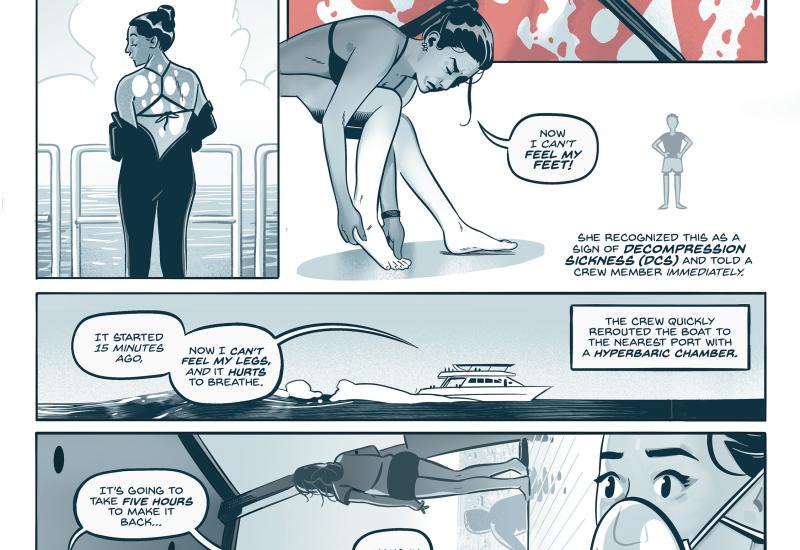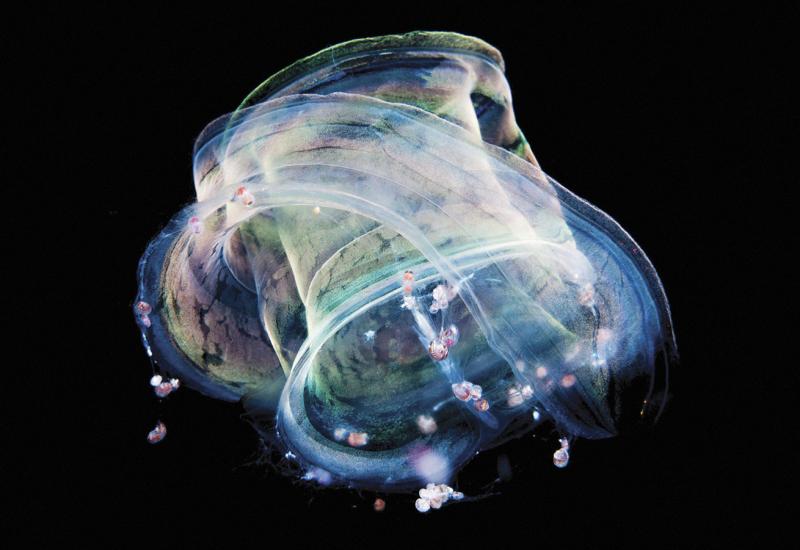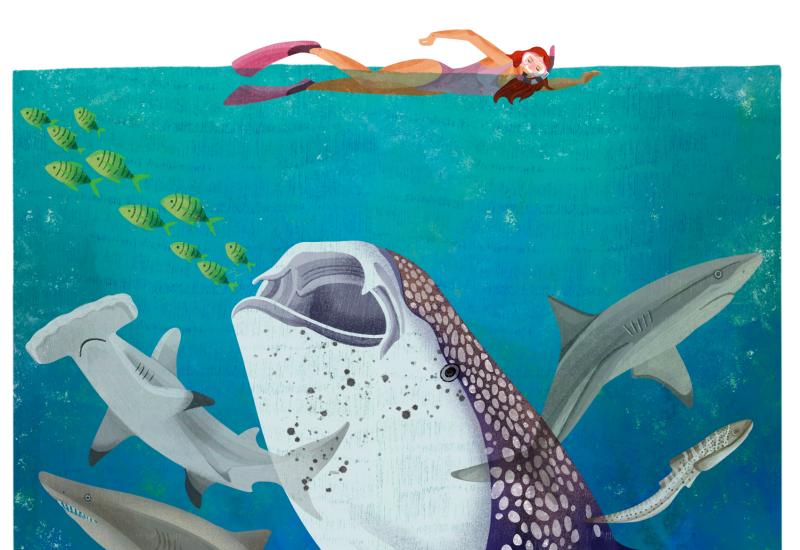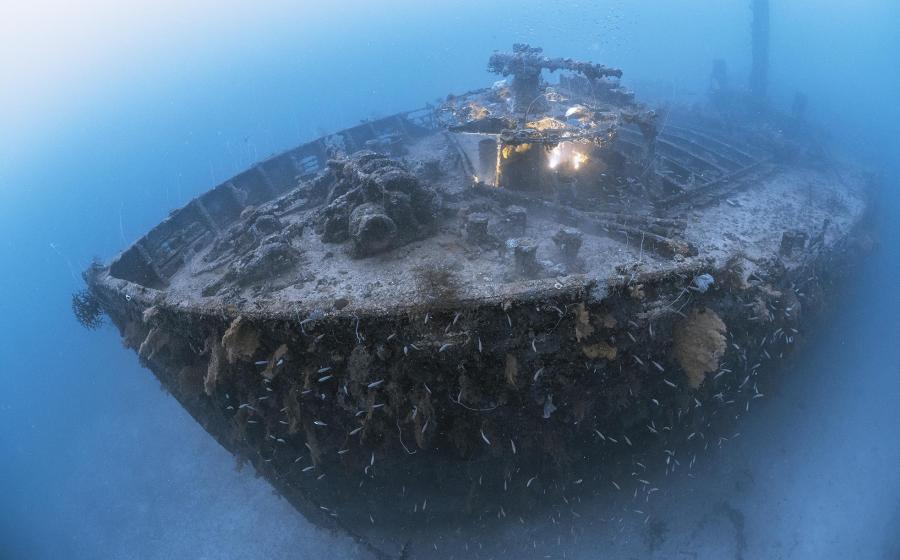What Happens to a Coral When It Is Dying?
In 2016, unnaturally warm ocean waters caused a catastrophic bleaching event on Australia’s famous Great Barrier Reef, the crown jewel of the planet’s coral reef ecosystems. One-third of its corals starved and perished. Since then, scientists say roughly 50 percent of the GBR’s corals have suffered a similar fate.
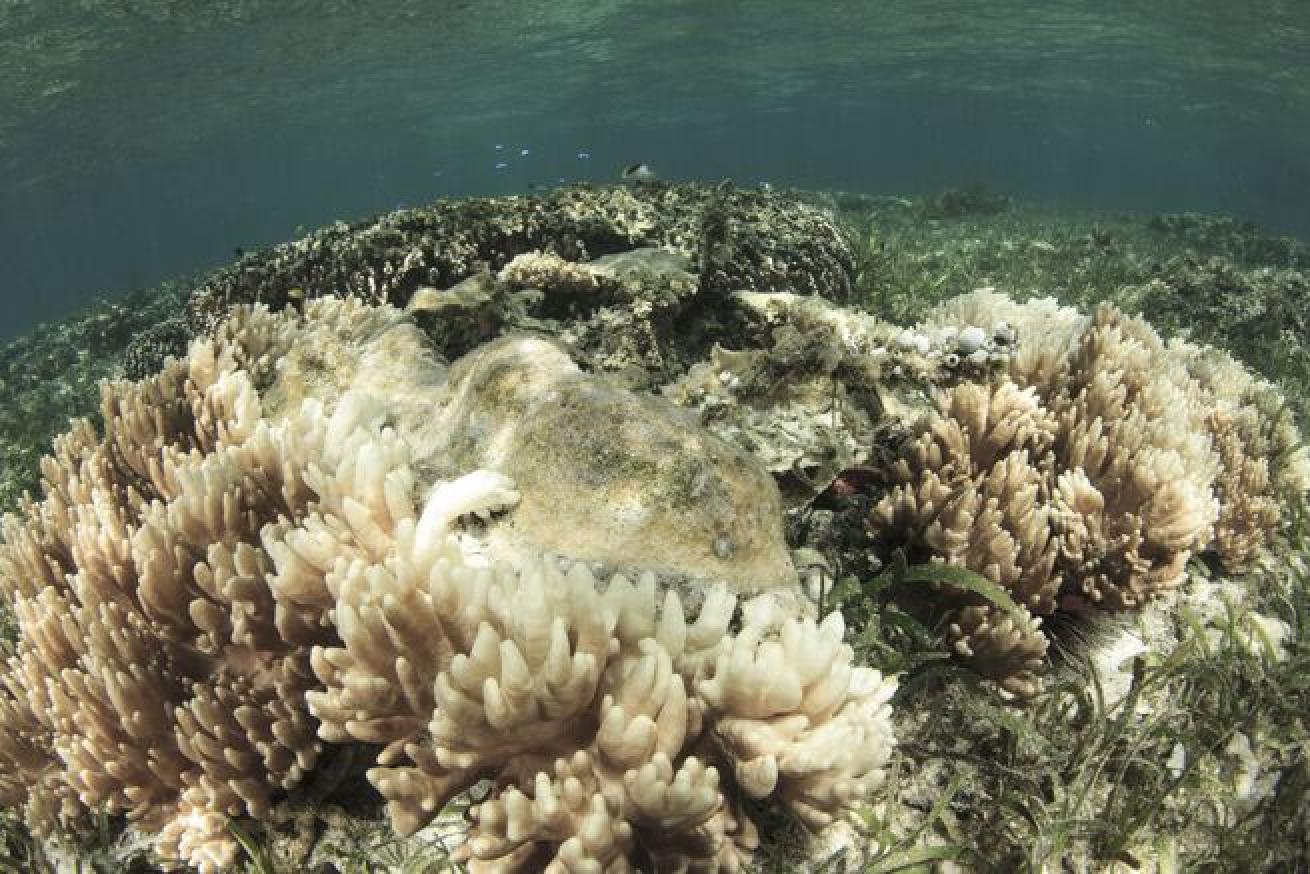
Rich Carey/ShutterstockDead and dying coral killed by global warming.
“In 2016, we had this huge wake-up call about the future of coral reefs all over the world,” says Kim Cobb, a professor of earth and atmospheric sciences and director of the Global Change Program at the Georgia Institute of Technology. “Those of us who are on top of the projections really thought we had a couple more decades until we saw this widespread and profound damage on coral reefs. In 2016, we realized this train wreck is already upon us.”
It doesn’t require a degree in marine biology to determine whether a coral reef is thriving. If the colors of the corals are bright, the reef is healthy. If the corals are bleached a ghostly white, the corals are dying.
To understand how corals bleach, you first have to understand what their requirements are for staying healthy.
“Corals usually like it warm,” says Margaret Miller, research director of Secore International, a conservation organization that together with the California Academy of Sciences and the Nature Conservancy has started the Global Coral Restoration Project. “They thrive in tropical and semi-tropical waters and prefer water temperatures between 73° and 84° Fahrenheit (23˚ and 29˚ Celsius).” Some corals can even tolerate temperatures as high as 104˚ F (40˚ Celsius), but only for a very short time, Miller says.
They also need sunlight. “Corals host tiny plants inside their cells, which receive a safe place to live and nutrients from the coral’s waste product,” Miller explains. “The tiny algae in turn share their photosynthetic energy with their host coral.” It is these algae—zooxanthellae—that color the coral.
Related Reading: How Your Fitness Impacts Diving
Getting into Hot Water
When ocean waters get warmer, most coral species experience heat stress, Miller says. When corals are stressed by rising water temperatures, they expel their symbiotic algae, which causes them to starve and turn completely white.
Bleaching does not immediately kill the coral. If the algae are able to return to their coral host, then the coral can recover. But what ocean researchers and scientists are witnessing are reefs that are not given a chance to recover from a devastating event. “The Great Barrier Reef has gone through successive bleaching events [since 2016] in different portions of the reef,” Cobb says. “Hawaii is under bleaching threats. There are always new bleaching hotspots. This has become part of our daily lives. Bleaching is in the headlines every few months. Unfortunately, it’s part of our new normal.”
The coral reef ecosystems we divers love take centuries to grow—and scientists say we are at risk of losing them in only a matter of years or a few decades.
“In certain regions, coral disease outbreaks, likely driven by a combination of warming and many local stressors—such as overfishing, pollution, eutrophication, coastal development and erosion, and others—have brought many coral species to the brink of local extinction,” Miller says.
“And it’s not going to get better,” Cobb says. “It’s actually only going to get worse.”
The Current Situation
In 2010, the the National Oceanographic and Atmospheric Administration reported that at least 19 percent of the world’s coral reefs—including 50 percent of those in the Caribbean—had already vanished, and within 20 years, if current trends continued, predicted that we could lose another 15 percent.This period is known as the second global coral bleaching event. The third global coral bleaching event most likely ended at the end of May 2017, but is the longest and most widespread coral bleaching event on record, affecting more reefs than any previous global bleaching event. Coral Reef Watch’s satellite monitoring data showing areas at risk for coral reef bleaching can be accessed here.
There are a number of contributing factors, says Miller, but a key one is that the planet’s oceans have absorbed more than 90 percent of the extra heat generated by the release of greenhouse gases from human activity.
“Since the beginning of industrialization 270 years ago, humans have emitted more than 2,200 gigatons of carbon dioxide,” Miller explains. “In a broader sense, a high concentration of greenhouse gases in the atmosphere works the same way an actual greenhouse does. Shortwave sunlight passes through its roof panels, but when Earth’s surface reflects this incoming energy as longwave radiation, it cannot leave the greenhouse. It is trapped instead and warms the air in the greenhouse, or in Earth’s atmosphere.”
And this greenhouse effect is accelerating, Miller warns. “Collectively, the last five years have been the warmest years in modern record. Global temperatures in 2018 were 1.5 degrees Fahrenheit (0.83 degrees Celsius) warmer than the 1951 to 1980 mean, making it the fourth hottest year, ranking behind those of 2016, 2017 and 2015.”
This heat is then absorbed and trapped in the world’s oceans. “Warming oceans contribute globally to increases in rainfall intensity, rising sea levels, declining oxygen levels, and declines in ice sheets and glaciers,” Miller says. “But coral reefs are especially susceptible, because they thrive at the upper edge of their temperature tolerance range—temperatures just a degree or two above their optimum can be lethal over a long exposure.”
When you combine warm ocean temps with other stressors such as overfishing and acidification, you’ve got a recipe for catastrophic disaster. “In the end, it is the sum of all stressors that kills coral reefs,” Miller says.
Related Reading: What It's Like to Be a Scuba Instructor
A Future Without Corals
Without corals and the ocean species that rely on them, the ecosystem crashes, and a seaweed-dominated ecosystem takes its place. Once coral reefs disappear, we will lose everything they provide, including marine biodiversity, productive fisheries and potential source of medicines.
“Coral reefs are some of the most diverse and valuable ecosystems on Earth,” Miller says. “They teem with life, with perhaps one-quarter of all ocean species depending on reefs for food and shelter. This is a remarkable statistic when you consider that reefs cover just a tiny fraction—less than 1 percent—of Earth’s surface and less than 2 percent of the ocean bottom. We can only save coral reefs if we limit global warming, and this requires substantial change in our way of life at many levels, starting with switching to renewable sources of energy, using carbon neutral ways of traveling, shopping locally, traveling less, consuming less, and eating less or no meat. Reducing global greenhouse gas emissions is the most important step to make.”
And that speaks to another challenge: How do we convince those who are not ocean scientists or on the front lines of ocean conservation that the situation is dire? “We have to bring clear and compelling evidence from eyewitness reports into the room about the effects of climate change,” says Cobb. “Corals are some of the most vulnerable ecosystems to climate change. We are all in the line of fire—every single one of us on the planet. Let’s make sure folks understand that when we solve climate change, we solve any number of public health epidemics—we improve air quality, water quality, resilience to power failures, national security. There are many reasons to jump on the climate-solutions bandwagon to protect ourselves and make our world a healthier, happier place.”
Cobb recognizes the difficulty in educating those who may never care about the ocean’s health, but she’s heartened by those who do. “We don’t have to move every single person with our acute sense of loss in terms of coral death and destruction,” she says. “We need to move some very key people who have at least resonance with that, and trust that everybody else can speak to their specific needs on the planet and what they really care about and how it is under threat, and then collectively, we can join forces to solve our common problems and challenges.”
Get More
• For an overview of Secore’s work, watch Growing Corals here.
• Download a comic for teaching kids about the importance of coral reefs.

